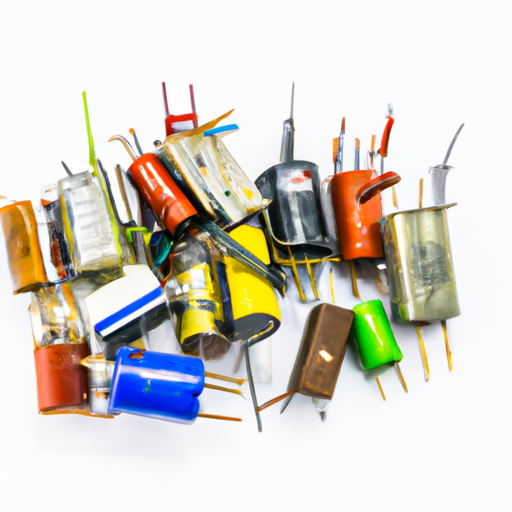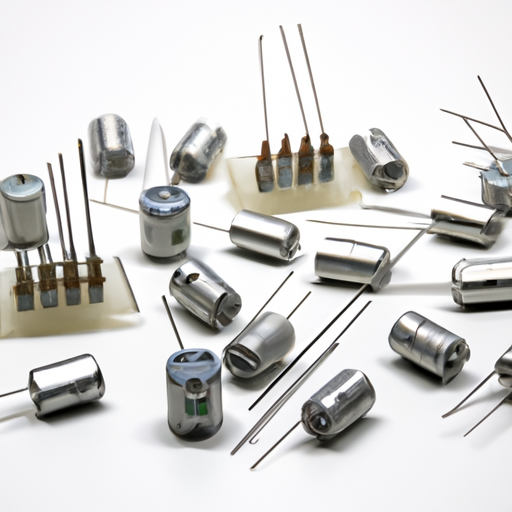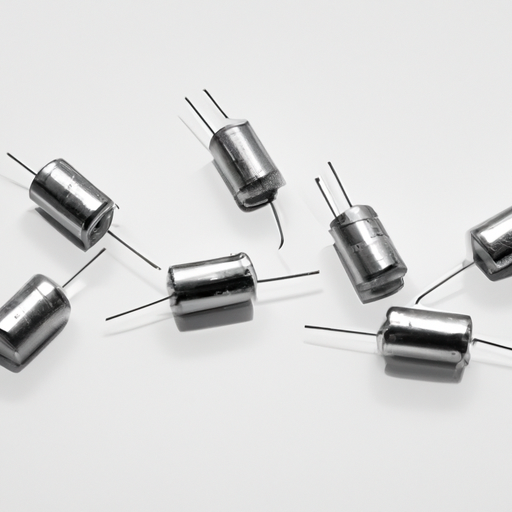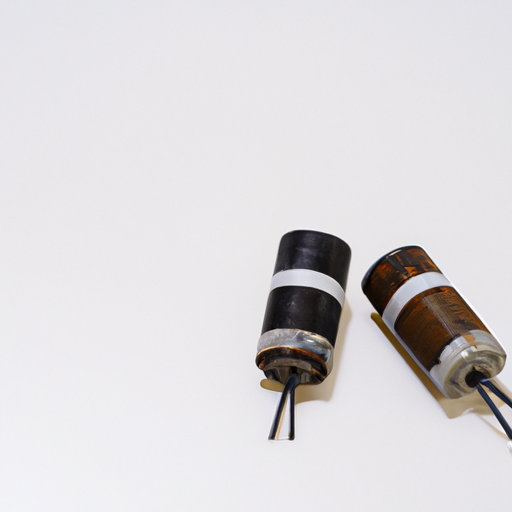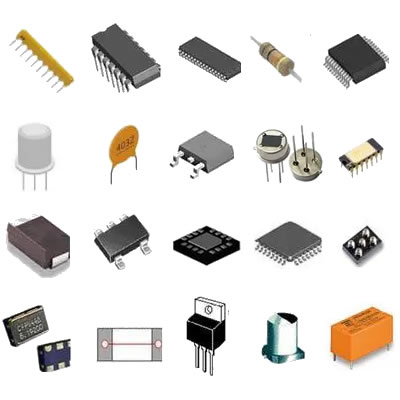What are the latest models of capacitor recycling equipment components?
What are the Latest Models of Capacitor Recycling Equipment Components?
Introduction
As the world becomes increasingly reliant on electronic devices, the issue of electronic waste (e-waste) has emerged as a significant environmental challenge. Among the various components found in e-waste, capacitors play a crucial role in the functioning of electronic devices. However, improper disposal of these components can lead to environmental degradation and loss of valuable materials. This has led to a growing emphasis on capacitor recycling, which not only mitigates environmental impact but also recovers precious metals and materials. In this article, we will explore the latest models of capacitor recycling equipment components, highlighting advancements that are shaping the future of sustainable electronic waste management.
1. Understanding Capacitor Recycling
1.1 What are Capacitors?
Capacitors are passive electronic components that store and release electrical energy. They are essential in various applications, including power supply circuits, signal processing, and energy storage systems. Common types of capacitors found in electronic waste include electrolytic capacitors, ceramic capacitors, and tantalum capacitors. Each type has unique properties and materials, making their recycling processes distinct.
1.2 The Importance of Recycling Capacitors
The improper disposal of capacitors can lead to environmental hazards, as they may contain harmful substances such as heavy metals and electrolytes. Recycling capacitors not only prevents these materials from contaminating the environment but also allows for the recovery of valuable resources. Metals like aluminum, tantalum, and nickel can be extracted and reused, contributing to a circular economy. Additionally, recycling can provide economic benefits by reducing the need for raw material extraction and lowering production costs.
2. Overview of Capacitor Recycling Processes
2.1 Collection and Sorting
The recycling process begins with the collection and sorting of e-waste. Proper sorting is crucial for efficient recycling, as different types of capacitors require different processing methods. Advanced sorting technologies, such as automated systems, are increasingly being employed to enhance the accuracy and speed of this initial step.
2.2 Dismantling
Once sorted, capacitors must be dismantled to separate them from other components. This process involves careful techniques to avoid damaging the capacitors and to ensure safety. Manual dismantling is still common, but automated dismantling systems are gaining traction, improving efficiency and reducing the risk of injury.
2.3 Material Recovery
The final step in the recycling process is material recovery, where valuable materials are extracted from the dismantled capacitors. Various methods, including mechanical shredding and chemical processing, are employed to achieve this. The choice of method depends on the type of capacitor and the materials being targeted for recovery.
3. Latest Models of Capacitor Recycling Equipment Components
3.1 Shredders
Shredders are a vital component of capacitor recycling equipment, as they reduce capacitors into smaller pieces for easier processing. Recent advancements in shredding technology have led to the development of high-efficiency shredders that can handle various capacitor types. For instance, manufacturers like UNTHA and Vecoplan have introduced models equipped with advanced cutting systems that enhance throughput while minimizing energy consumption.
3.2 Separation Systems
Separation systems are crucial for isolating valuable materials from shredded capacitor components. Technologies such as air classification and magnetic separation have seen significant innovations. For example, the use of air classifiers allows for the effective separation of lighter materials from heavier ones, while magnetic separators can extract ferrous metals. Companies like Eriez and Steinert are at the forefront of developing these advanced separation technologies, improving overall recycling efficiency.
3.3 Chemical Processing Equipment
Chemical processing plays a vital role in extracting specific materials from capacitors, particularly tantalum and aluminum. New developments in chemical treatment methods, such as solvent extraction and hydrometallurgical processes, have emerged to enhance recovery rates while minimizing environmental impact. Equipment manufacturers are focusing on creating systems that are both effective and environmentally friendly, ensuring compliance with stringent regulations.
3.4 Dust and Fume Extraction Systems
Air quality management is critical in recycling facilities, especially during the shredding and chemical processing stages. The latest models of dust and fume extraction systems are designed to capture harmful particles and gases, ensuring a safe working environment. Companies like Donaldson and Camfil have developed advanced filtration systems that not only comply with regulatory standards but also improve operational efficiency by reducing downtime.
3.5 Automated Sorting Systems
The rise of automation in recycling processes has revolutionized the industry. Automated sorting systems utilize technologies such as artificial intelligence (AI) and machine learning to enhance the accuracy and speed of material sorting. These systems can identify and separate different types of capacitors with remarkable precision, significantly improving recycling rates. Leading manufacturers like TOMRA and Bulk Handling Systems are pioneering these technologies, demonstrating the benefits of automation in terms of efficiency and cost-effectiveness.
4. Case Studies of Successful Capacitor Recycling Facilities
4.1 Facility A: Innovative Shredding and Separation
One notable example is Facility A, which has implemented cutting-edge shredding and separation technologies. By utilizing high-efficiency shredders and advanced air classification systems, the facility has significantly increased its recycling efficiency. The integration of these technologies has allowed Facility A to recover over 90% of valuable materials from the capacitors processed, setting a benchmark in the industry.
4.2 Facility B: Chemical Processing Excellence
Facility B has focused on optimizing its chemical processing methods to enhance material recovery. By adopting new solvent extraction techniques, the facility has improved its tantalum recovery rates by 30%. The use of environmentally friendly chemicals has also ensured compliance with regulations while maintaining high recovery efficiency.
4.3 Facility C: Automation in Action
Facility C has embraced automation to transform its recycling processes. By implementing AI-driven sorting systems, the facility has reduced manual labor costs and increased sorting accuracy. The result has been a 40% increase in overall recycling throughput, demonstrating the significant impact of automation on operational efficiency.
5. Future Trends in Capacitor Recycling Equipment
5.1 Emerging Technologies
Research and development in recycling technologies continue to evolve, with a focus on improving efficiency and sustainability. Emerging technologies, such as bioleaching and advanced hydrometallurgical processes, hold promise for enhancing material recovery rates while minimizing environmental impact.
5.2 Regulatory Changes and Their Impact
As governments worldwide tighten regulations on e-waste management, manufacturers of recycling equipment must adapt to these changes. Anticipated regulations may require more stringent environmental controls and higher recovery rates, prompting manufacturers to innovate and improve their equipment.
5.3 The Role of Industry Collaboration
Collaboration between manufacturers, recyclers, and policymakers is essential for advancing capacitor recycling practices. Successful partnerships can lead to the development of best practices, shared technologies, and improved regulatory frameworks, ultimately benefiting the entire recycling ecosystem.
Conclusion
Capacitor recycling is a critical component of sustainable electronic waste management, and the latest advancements in recycling equipment are paving the way for more efficient and environmentally friendly processes. From innovative shredders and separation systems to automated sorting technologies, the industry is witnessing a transformation that enhances material recovery and reduces environmental impact. As stakeholders in the electronics industry prioritize sustainable practices, continued investment in recycling technologies will be essential for addressing the growing challenge of e-waste. By embracing these advancements, we can work towards a more sustainable future, ensuring that valuable resources are recovered and reused rather than discarded.
References
- [Environmental Protection Agency (EPA) - E-Waste Management](https://www.epa.gov/recycle/electronics-recycling)
- [International Telecommunication Union (ITU) - The Global E-Waste Monitor](https://www.itu.int/en/ITU-T/Workshops-and-Seminars/2020/Pages/ewaste.aspx)
- [World Economic Forum - The Circular Economy](https://www.weforum.org/agenda/2020/01/circular-economy-what-is-it-and-why-does-it-matter/)
- [TOMRA - Recycling Solutions](https://www.tomra.com/en/sorting/recycling/)
- [Eriez - Separation Technologies](https://www.eriez.com/)
This blog post provides a comprehensive overview of the latest models of capacitor recycling equipment components, emphasizing the importance of innovation in addressing the challenges of electronic waste.

